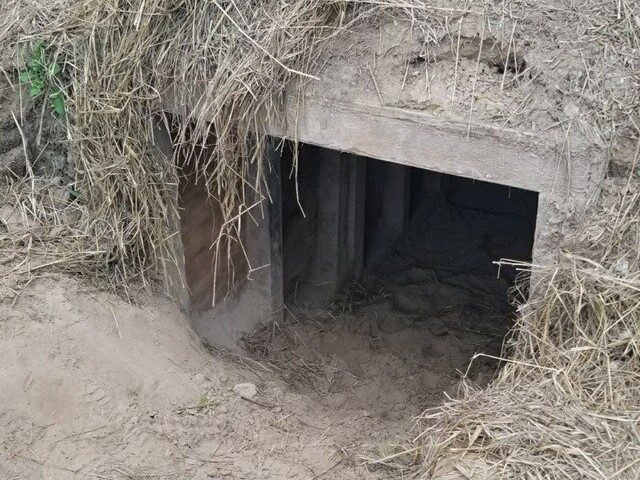Border patrol agents discovered a 60-foot tunnel leading from Mexico into the United States at the Texas border in the city of Hidalgo. It is located at the bottom of a 30-foot embankment on the Rio Grande River, near a border wall built a decade ago, say officials.
It is a suspected smuggling tunnel and only visible and accessible from the river. The tunnel sits on property that belongs to the U.S. Fish and Wildlife Service. It is about 2,000 feet from the Hidalgo County Water Improvement District No. 3 pump station. Reportedly, the Marine unit of U.S. Customs and Border Protection (CBP) found the Hidalgo tunnel almost two weeks ago.
Upon its discovery, federal authorities contacted Othal Brand, Jr., the utility company’s president to ascertain if the water district could collapse the tunnel. Brand, however, told them this was a complex operation and, given the construction and location of the underground structure, it required explosion experts, according to the Rio Grande Guardian.
“The cliff they dug through is a soft sand,” said Brand, who explained the tunnel contained four-by-fours spaced around two to three feet apart on the top and on both of its sides. “The diggers push a piece of pipe into the earth and as they do they remove the sand. As they do that they keep pushing the pipe in. Once they get far enough in they erect these four-by-fours and plywood on each side and the top.”
Brand believed the tunnel intended to go under the existing border wall where a small shopping mall houses a sports rental business in Hidalgo. “Our suspicion is they were going to come up in one of these rental units and store their stuff there and just pick it up when they want,” said Brand. “They were deep enough to go under that wall without any problems.”
He praised the Marine Unit of CBP for finding it. “Boots on the ground would not have seen it. Helicopters would not have found it. Drones, sensors, would never have found it. You could only see it from the river. They looked at the cliff and found it. It was all covered up with bamboo and brush. It looked kind of dry, which alerted them to it.”
According to the Rio Grande Guardian, border patrol agents cautioned state lawmakers visiting the Rio Grande Valley last week against a planned water district tour after they spotted the presence of drug cartel members on the other side of the Rio Grande wearing camouflage and brandishing rifles.
The water district president also told the newspaper his workers frequently see drug and human traffickers hanging up in trees across the river. “They have lookouts. They are waiting to see if there is a time when border patrol is not there.”
Still, Brand said this was the first tunnel he saw locally. He told KRGV: “You’ve seen them on the news in Arizona and New Mexico but I’ve never seen one in the Valley. That’s the first one I’ve seen in our backyard.”
In January, Breitbart Border/Cartel Chronicles reported on 29 facts about the border and Mexican cartels, including details on tunnels:
The majority of tunnels are found on the Arizona and California borders. The tunnels are generally discovered in areas where there are population centers on both sides of the border and a wall or fence is already in place. Few have been found in Texas, where there is a river.
Most tunnels are discovered thanks to informants; law enforcement technology has rarely been successful in locating border tunnels.
Most of the border does not have a drug tunnel problem. They are typically found in Douglas and Nogales, Arizona, as well as Mexicali, San Diego/San Isidro, California.
Cartels spend a lot of money building a tunnel – only to be discovered shortly after.
Officials plan to demolish the Hidalgo tunnel in the coming weeks.
Follow Merrill Hope, a member of the original Breitbart Texas team, on Facebook and Twitter.

COMMENTS
Please let us know if you're having issues with commenting.